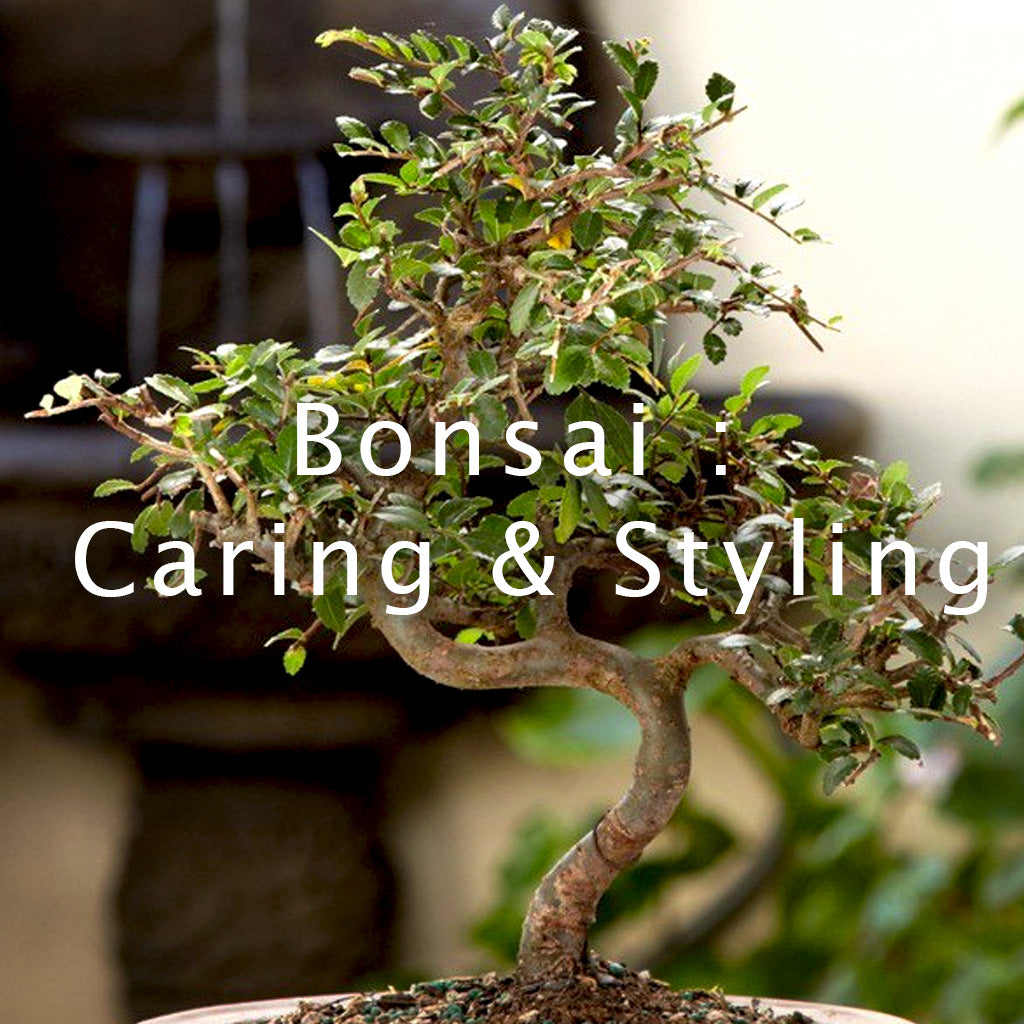What is a Bonsai?
The ancient art of bonsai literally translated as ("planted in a container") has been practised for well over a thousand years to create realistic interpretations of natural trees in miniature form. It is a Japanese art form but it also has its roots derived from China and Korea.
Bonsai trees are not dwarfed via genetic mutation and should not be confused with dwarfed plants. These trees are simply trained to be smaller by growing them in smaller containers, pruning the tree and bonding its branches with wires.
Image credit : http://quaintrellelife.blogspot.in/2013/05/tiny-tree-take-out.html
Growing a bonsai from scratch takes years of practice and is very difficult so we recommend any beginners to start with an already planted bonsai which you get from here, this will teach one how to care for a bonsai first and it is better to know what you are dealing with.
Select a bonsai according to your needs and preferences. Look at your environment and then decide the type of bonsai that will be best suited for it. There is tons of information online about this and is available in our plant description section as well.
Now that you have your bonsai it's important to learn how to care for it first. There are two major steps in bonsai maintenance which are styling and care.
Styling A Bonsai :

Image credit : https://www.meetup.com/FloridaGardeners/events/191400692/

Image credit : https://taigabonzai.com/2016/03/
Start by selecting the branch and then cut off the right length of wire according to the branch. After that wrap the wire around the trunk from the base to the tip of the branch. Make sure that the wire is wrapped tightly but it should not be too restrictive.
Bonsai Care
- Watering-
- As mentioned previously, how often a Bonsai tree needs to be watered depends on too many factors to provide an exact guideline.
- Water your trees when the soil gets slightly dry. This means you should not water your tree when the soil is still wet but only when it feels slightly dry; use your fingers to check the soil at around 0.4’’ (one centimetre) deep
- Never water on a routine. Keep observing your trees individually, instead of watering them on a daily routine,
- Use the right soil-mixture. The soil-mixture greatly influences how often the tree needs water, for most Bonsai trees a mixture of akadama, pumice and lava rock mixed together in a ratio of ½ to ¼ to ¼ should be fine. However, use a mixture that retains more water (by using more akadama, or even potting compost) when you cannot water your trees that regularly.
2. Fertilizers-
- Most Bonsai trees should be fertilized during the entire growing season of the tree; from early spring till mid-autumn.
- Older and more mature trees are often fertilized less frequently, also depending on the species, the time of year, the stage of development and health of the tree. Indoor trees can be fertilized around the year.
- It is important to choose the right fertilizer for your Bonsai plants and apply the right quantities. It is often recommended to use a fertilizer with a relatively high Nitrogen content in spring (something like NPK 10:6:6), a more balanced fertilizer (like NPK 6:6:6) in summer, and in autumn a low Nitrogen fertilizer (like NPK 3:6:6).
- It depends on the size of container/pot and tree species how often a Bonsai tree needs to be repotted as mentioned earlier.
- Fast growing trees need to be repotted every two years (sometimes even every year), while older, more mature trees need to be repotted every three to five years. Do not repot on a routine, instead check on your trees every early spring by carefully removing the tree from its pot. A Bonsai needs to be repotted when the roots circle around the root system. When the roots are still contained in soil wait another year before checking again.
- Repotting work normally needs to be done during the early spring; when the tree is still in dormancy
- Size equals health. According to basic rules, a pot should not be more than 2/3 of the height of the tree. This is to ensure that the bonsai tree remains restricted. If the pot is very deep and broad the roots of the bonsai will spread more eventually causing to grow bigger in size. Therefore select a shallow and small pot with a hole for drainage at the bottom
- Most outdoor trees are best placed on a bright spot, about half the day in direct sunlight and protected from the wind.
- Indoor trees are best placed on a bright position as well; usually right in front of a window facing the South. Place indoor trees somewhere with a constant temperature.
Want to start your own collection of Bonsai trees? You can buy them online from here , and also from below.







